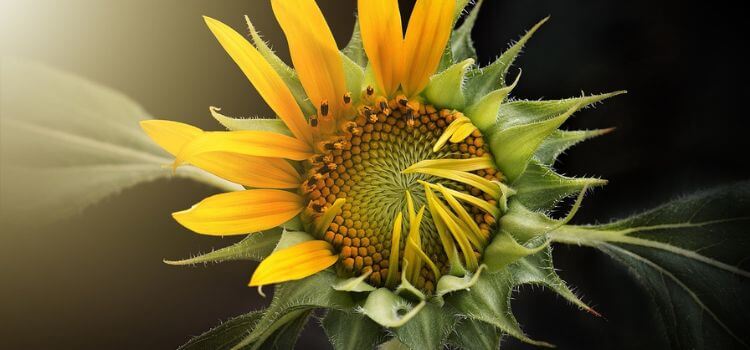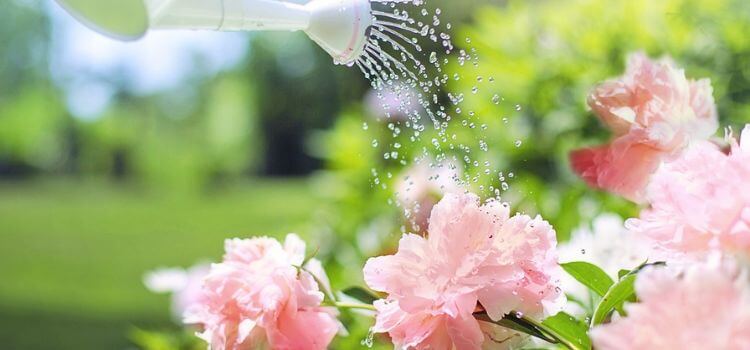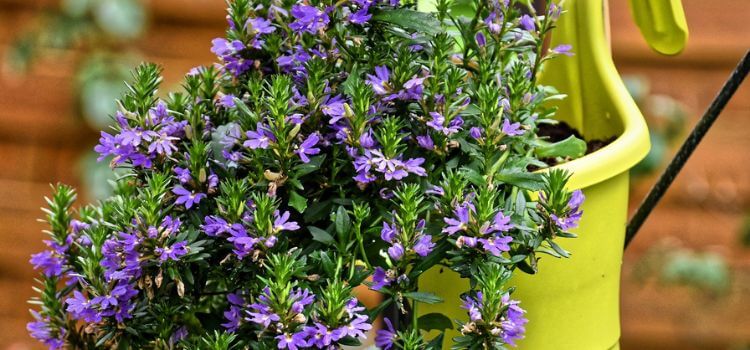As an Amazon Associate, I earn from qualifying purchases.
Seasonal plant care involves adjusting the season’s watering, pruning, and fertilizing practices. Proper care ensures healthy growth and blooming.
Seasonal plant care is crucial for maintaining vibrant and thriving plants throughout the year. Each season brings unique challenges and needs for plants, making it essential to adapt your care routine accordingly. During spring, focus on feeding and pruning to encourage new growth.
Summer requires consistent watering and protection from excessive heat. Fall is the time to prepare plants for dormancy by reducing watering and fertilizing. Winter care involves protecting plants from frost and minimal watering. I care for seasonal plants this way, and the results have been excellent.
Spring Care Tips
Spring is the perfect time to give your garden some extra love. Plants start to wake up from their winter slumber, and proper care during this season ensures healthy growth. Let’s discuss some essential spring care tips for your plants.
Soil Preparation
Good soil is the foundation of a healthy garden. Spring is the ideal time to prepare your soil. Follow these steps for the best results:
- Clear out any weeds or debris from the soil.
- Loosen the soil with a garden fork or tiller.
- Mix in organic compost to enrich the soil.
Testing the soil’s pH can help you understand its condition. Most plants thrive in neutral to slightly acidic soil. Adjust the pH levels if needed. Here is a quick guide:
| pH Level | Action Needed |
|---|---|
| Below 6.0 | Add lime to raise pH. |
| Above 7.0 | Add sulfur to lower pH. |
Mulching is another crucial step. It helps retain moisture and suppresses weeds. Spread a 2-3-inch layer of mulch around your plants. This will keep them healthy and strong.
Fertilization Needs
Fertilizing your plants in spring gives them a much-needed boost. Plants require different nutrients at this stage. Here are some key points to consider:
- Use a balanced fertilizer with equal nitrogen, phosphorus, and potassium.
- Apply the fertilizer according to the package instructions.
- Consider slow-release fertilizers for a steady supply of nutrients.
Organic options like compost or manure are also excellent choices. These natural fertilizers improve soil structure and provide nutrients. Here is a comparison of common fertilizers:
| Fertilizer Type | Benefits |
|---|---|
| Chemical | Fast-acting, precise nutrient ratios. |
| Organic | Improves soil health, eco-friendly. |
Water your plants after fertilizing. This helps the nutrients reach the roots. Regular fertilization promotes healthy growth and beautiful blooms. Your garden will thrive with the proper care. These care tips are excellent! In this way, you can easily care for your spring seasonal plants.
Summer Maintenance
Summer can be harsh on plants. The heat and sun can stress them, It’st’s essential to give them special care. This guide will help with summer maintenance, keeping your plants healthy and happy.

Watering Techniques
Watering is essential in summer. Plants can dry out quickly. Here are some tips:
- Water early in the morning. This helps plants absorb water before it gets too hot.
- Use a soaker hose. It delivers water directly to the roots.
- Water deeply. Make sure water reaches the roots. Shallow watdoesn’toesn’t help much.
- Mulch your plants. Mulch helps to keep the soil moist. It also keeps the roots cool.
Use these tips to keep your plants hydrated. Healthy plants need proper watering.

Pest Control
Pests can be a big problem in summer. They love the warm weather. Here are some ways to control pests:
- Inspect your plants regularly. Look for signs of pests. Catching them early can save your plants.
- Use natural predators. Ladybugs and spiders eat harmful pests.
- Apply neemIt’s. It’s a natural pesticide. Safe for plants and pets.
- Keep your garden clean. Remove dead leaves and debris. This helps to reduce pest-hiding spots.
Effective pest control can keep your garden safe. Follow these tips for a pest-free summer.
Fall Preparations
Plant care changes with the seasons. Fall, in particular, is a critical time. Proper preparation ensures healthy plants. This guide will help you with fall preparations. Learn effective pruning strategies and the benefits of mulching.
Pruning Strategies
Pruning is essential in It’s. It’s vital to remove dead or diseased branches. This helps to prevent pests and diseases. Follow these pruning tips for best results:
- Use sharp tools: Clean cuts heal faster and reduce plant stress.
- Cut at an angle prevents water from pooling on the cut surface.
- Prune to shape: This encourages healthy growth and improves plant appearance.
Some plants need specific pruning tHere’sHere’s a simple table to guide you:
| Plant Type | Pruning Time |
|---|---|
| Roses | Late fall |
| Fruit Trees | Early fall |
| Perennials | After first frost |
Pruning helps plants stay healthy and prepares them for winter. Remember to clean your tools after use, as this prevents the spread of disease between plants.
Mulching Benefits
Mulching provides multiple benefits for plants. It helps retain soil moisture, reducing the need for frequent watering. Mulch also insulates plant roots, which is crucial during temperature drops.
Here are some key benefits of mulching:
- Weed control: Mulch suppresses weed growth by blocking sunlight.
- Soil health: Organic mulch decomposes, adding nutrients to the soil.
- Temperature regulation: Mulch keeps soil cool in summer and warm in winter.
Choose the right mulch for your plants. Here are some common types:
| Type of Mulch | Best Use |
|---|---|
| Wood Chips | Trees and shrubs |
| Straw | Vegetable gardens |
| Compost | Flower beds |
Apply a thick layer of mulch around your plants. Aim for 2-3 inches deep. Avoid piling mulch against plant stems. This can cause rot and attract pests.
Winter Protection
Seasonal plant care is crucial for keeping your plants healthy and vibrant. Winter protection is especially important as cold temperatures can harm plants. Proper care ensures they survive and thrive through the colder months.
Indoor Plant Care
Indoor plants need special attention during winter. Temperature changes can stress them out. It’s best to keep them away from drafty windows and doors. Humidity levels drop in winter, so that plants may need extra moisture.
- Mist the leaves regularly to increase humidity.
- Water sparingly, but ensure the soil stays moist.
- Check for pests like spider mites, which thrive in dry conditions.
Lighting is also essential. Shorter days mean less sunlight. Move plants closer to windows to maximize light exposure. You can also use grow lights to supplement natural light. Remember to rotate the pots every week to ensure all sides receive equal light.
Frost Prevention
Frost can damage outdoor plants. Covering plants helps protect them from cold. Use burlap, blankets, or frost cloths. Secure the coverings to prevent them from blowing away. Mulching is another effective method. Add a thick layer of mulch around the base of the plants. This helps insulate the roots.
- Watering is crucial before a frost. Moist soil retains heat better than dry soil. Ensure your plants are well-watered, but avoid overwatering. Pruning can also help. Remove dead leaves and branches to reduce stress on the plant, allowing it to focus on staying healthy.
- Temperature regulation: Mulch keeps soil cool in summer and warm in winter.
Choose the right mulch for your plants. Here are some common types:
| Frost Prevention Tips | Description |
|---|---|
| Cover Plants | Use burlap, blankets, or frost cloths |
| Mulch | Add a thick layer around the base |
| Water | Ensure soil is moist, but not overwatered |
| Prune | Remove dead leaves and branches |
Seasonal Plant Selection
Seasonal plant care is essential for maintaining a vibrant and healthy garden throughout the year. Each season brings unique conditions that affect plant growth, health, and appearance. Understanding these changes helps in selecting the right plants for each season. Proper care ensures that your garden flourishes, providing beauty and enjoyment all year round.
Best Spring Plants
Spring brings new beginnings and a burst of color to gardens. Choosing the best plants for this season can enhance the beauty of your outdoor space. Here are some top choices for spring plants:
- Tulips: These vibrant flowers, which come in various colors, bloom early in spring. They are easy to plant and require minimal care.
- Daffodils: Known for their bright yellow petals, daffodils are hardy and can thrive in most soil types.
- Hyacinths: These fragrant flowers add a lovely scent to your garden. They come in shades of pink, purple, and white.
- Crocuses: These tiny flowers are among the first to bloom in spring. They grow well in full sun and well-drained soil.
In addition to flowers, consider planting vegetables that thrive in spring. These include:
| Vegetable | Planting Time | Care Tips |
|---|---|---|
| Lettuce | Early Spring | Requires full sun and regular watering |
| Carrots | Mid Spring | Needs loose, sandy soil and thinning as they grow |
| Peas | Early Spring | Prefers cooler temperatures and well-drained soil |
Top Winter Varieties
Winter can be challenging for gardeners, but many plants thrive in colder conditions. Here are some top winter varieties to consider:
- Pansies: These hardy flowers can survive frost and bloom throughout the winter. They come in a range of colors and add cheer to any garden.
- Hellebores: Also known as Christmas roses, hellebores bloom in late winter. They prefer shady spots and are deer-resistant.
- Winter Jasmine: This plant produces yellow flowers on bare stems. It requires minimal care and can tolerate cold weather.
- Camellias: These shrubs have glossy leaves and beautiful flowers that bloom in winter. They thrive in well-drained, acidic soil.
Winter vegetables can also be a great addition to your garden. Consider planting:
| Vegetable | Planting Time | Care Tips |
|---|---|---|
| Kale | Late Fall | Requires full sun and can tolerate frost |
| Brussels Sprouts | Late Summer | Needs firm soil and regular watering |
| Swiss Chard | Early Fall | Grows well in full sun and partial shade |
Common Plant Problems
Seasonal plant care is essential for keeping your garden healthy and vibrant. Plants face different challenges during different seasons, ranging from pests to weather conditions. Understanding these common problems can help you take better care of your plants. This blog will guide you through identifying issues and natural remedies.
Identifying Issues
Plants show signs when they are not healthy. Yellow leaves can indicate a lack of nutrients, brown spots may indicate fungal infections, and wilted leaves often point to watering issues. Knowing these signs is important to acting quickly.
Here are some common plant problems and their symptoms:
- Yellow Leaves: Lack of nitrogen or overwatering.
- Brown Spots: Fungal infection or pest damage.
- Wilting: Underwatering or root damage.
- Leaf Drop: Temperature stress or overwatering.
Sometimes, plants can have multiple issues at once. Keep an eye on your plants and check them regularly. Use a magnifying glass to look for tiny pests. Check the soil moisture level with your finger.
Here is a table that summarizes common issues and their causes:
| Issue | Possible Cause |
|---|---|
| Yellow Leaves | Lack of nutrients, Overwatering |
| Brown Spots | Fungal infection, Pest damage |
| Wilting | Underwatering, Root damage |
| Leaf Drop | Temperature stress, Overwatering |
Natural Remedies
Using natural remedies can keep your plants healthy without chemicals. Neem oil is a great natural pesticide. Mix it with water and spray on the affected leaves. Garlic spray can deter many pests. Crush garlic cloves and mix with water to make the spray.
Here are some easy-to-make natural remedies:
- Neem Oil Spray: Mix one teaspoon of neem oil with 1 liter of water.
- Garlic Spray: Crush five garlic cloves and mix with 1 liter of water.
- Milk Spray: Mix 1 part of milk with two parts water to treat fungal infections.
- Baking Soda Spray: Mix one teaspoon of baking soda with 1 liter of water for mildew.
These remedies can be sprayed on plants once a week. Make sure to test a small area first. Some plants may be sensitive. Observe for any adverse reactions before treating the entire plant.
Natural remedies are not only safe but also eco-friendly. They help maintain the balance in your garden, making it a healthier place for all living beings.
Tools For Seasonal Care
Seasonal plant care is vital for keeping your garden lush and healthy. Each season brings unique challenges and needs for your plants. Proper tools and maintenance tips help you navigate these changes with ease. This guide will help you understand the tools and tips for successful seasonal plant care.
Essential Gardening Tools
Having the right gardening tools makes seasonal plant care more accessible and more effective. Here are some must-have tools for any gardener:
- Pruning Shears: Perfect for trimming dead or overgrown branches.
- Garden Gloves: Protect your hands from thorns and dirt.
- Rake: Ideal for gathering leaves and debris.
- Watering Can: Helps you water plants evenly.
- Garden Fork: Breaks up soil and removes weeds.
Investing in quality tools can save you time and effort. Pruning shears are great for shaping plants and removing dead parts. Garden gloves keep your hands safe while working. A rake helps you clean up fallen leaves and keeps your garden tidy. A watering can ensures your plants get the right amount of water. Finally, a garden fork helps you maintain soil health by breaking it up and removing weeds.
Maintenance Tips
Regular maintenance is critical to a thriving garden. Here are some easy tips to follow:
- Watering: Water plants deeply but less often to encourage strong roots.
- Weeding: Remove weeds regularly to prevent them from taking over your garden.
- Mulching: Add mulch to retain soil moisture and control weeds.
- Pruning: Trim plants to promote healthy growth and remove dead parts.
- Fertilizing: Use organic fertilizers to nourish your plants.
Watering your plants correctly helps them develop deep roots. Weeding frequently keeps unwanted plants from stealing nutrients. Mulching helps keep the soil moist and reduces weed growth. Pruning helps plants grow better and look neat. Fertilizing with organic options provides essential nutrients for healthy growth.
Sustainable Practices
Seasonal plant care is essential for maintaining a healthy and thriving garden throughout the year. Adopting sustainable practices helps conserve resources and promote a healthier ecosystem. This blog post will delve into the benefits of composting and the importance of using native plants in your garden.
Composting Benefits
Composting is an excellent way to enrich your soil and reduce waste. It transforms organic material into nutrient-rich compost, which can be used to improve soil health. Here are some of the benefits of composting:
- Reduces waste: Composting helps in reducing the amount of organic waste sent to landfills.
- Enriches soil: The compost adds essential nutrients, promoting healthy plant growth.
- Retains moisture: Compost helps soil retain water, reducing the need for frequent watering.
- Reduces the need for chemical fertilizers: Compost provides natural nutrients, decreasing the reliance on synthetic fertilizers.
- Promotes beneficial organisms: Compost attracts earthworms and other beneficial microorganisms to your garden.
Creating a compost pile is easy and requires minimal effort. Start by collecting kitchen scraps like vegetable peels and coffee grounds. Add yard waste such as leaves and grass clippings. Ensure a good balance of green and brown materials for optimal decomposition.
Native Plants
Using native plants in your garden offers numerous advantages. Native plants are adapted to the local climate and soil, making them easier to care for. Here are some key benefits of native plants:
- Low maintenance: Native plants require less water and fertilizers, reducing the need for regular care.
- Supports local wildlife: These plants provide food and habitat for birds, insects, and other wildlife.
- Resistant to local pests: Native plants naturally resist local pests and diseases.
- Conserve water: Native plants are adapted to the local rainfall patterns, reducing the need for additional watering.
- Promotes biodiversity: A garden with native plants supports diverse species.
When selecting native plants, consider the specific conditions of your garden. Some plants thrive in sunny areas, while others prefer shade—research local plant species to find the best options for your garden. Planting native species ensures a beautiful and sustainable garden.

Frequently Asked Questions
How To Care For Seasonal Plants?
Seasonal plants need specific care according to their growth cycle. Water them regularly, but avoid overwatering. Ensure they get enough sunlight. Use appropriate fertilizers to enrich the soil. Prune dead parts to promote healthy growth.
What Are The Best Plants For Each Season?
Choose plants for each season: spring: tulips and daffodils; summer: sunflowers and marigolds; fall: chrysanthemums and asters. Winter: pansies and evergreens. This ensures optimal growth and vibrant blooms.
How Often Should I Water Seasonal Plants?
Watering frequency depends on the plant type and season—generally, water once a week. Adjust based on rainfall, temperature, and plant needs. Check the soil moisture regularly to avoid overwatering.
Do Seasonal Plants Need Special Soil?
Seasonal plants thrive in well-draining, nutrient-rich soil. Add compost to improve soil quality. Different plants may have specific soil requirements. Research individual plant needs for best results.
Conclusion
Caring for plants seasonally ensures they thrive year-round. Adjust watering, light, and feeding to match seasonal needs. Your plants will reward you with vibrant growth and blooms. Happy gardening, and remember, attentive seasonal care is the key to healthy, flourishing plants.

